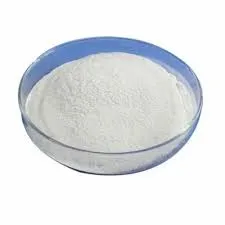
okt . 09, 2024 21:52 Back to list
what is hpmc used for
What is HPMC Used For?
Hydroxypropyl methylcellulose (HPMC) is a versatile cellulose-based polymer commonly utilized in various industries, including pharmaceuticals, food, construction, and personal care products. Its unique properties, such as high water solubility, film-forming ability, and thickening capacity, make HPMC an essential ingredient in numerous applications. In this article, we will explore the various uses of HPMC and its significance in different sectors.
1. Pharmaceutical Applications
One of the primary uses of HPMC is in the pharmaceutical industry, where it serves multiple functions. It is widely employed as a binder in tablet formulations, providing cohesiveness during the production process and ensuring that active ingredients are evenly distributed. HPMC is also used as a film-coating agent for tablets and capsules, offering a protective barrier that enhances stability and improves the release profile of drugs in the digestive system.
Moreover, HPMC is utilized in controlled-release formulations due to its ability to form hydrogels. These hydrogels allow for the sustained release of drugs, which is vital for maintaining therapeutic levels in the bloodstream and improving patient adherence to prescribed regimens. Additionally, HPMC is often used in ophthalmic preparations, such as eye drops, where it acts as a viscosity-increasing agent to provide longer contact time and reduce irritation.
In the food sector, HPMC finds applications as a food additive, primarily serving as a thickening and stabilizing agent. It helps improve the texture and mouthfeel of various products, ranging from sauces and dressings to dairy and bakery items. HPMC can also act as a fat replacer in low-fat or reduced-calorie food products, providing the desired creamy consistency without the added calories.
Beyond its thickening properties, HPMC plays a role in enhancing the shelf life of food products. It prevents the separation of ingredients and maintains the overall quality, ensuring that consumers receive a consistent and enjoyable product. With the increasing demand for gluten-free alternatives, HPMC has garnered attention as a suitable substitute for gluten in baked goods, providing structure and moisture retention.
what is hpmc used for

3. Construction Industry
In construction, HPMC is widely used as an additive in cement-based products, such as mortars, plasters, and adhesives. Its water-retaining properties help improve workability and extend the open time of the mixtures, allowing for better application and finishing. HPMC also enhances the adhesion of mortars to various surfaces, ensuring durability and performance.
Moreover, HPMC contributes to the overall strength and flexibility of constructing materials. Its inclusion helps reduce cracking and shrinkage while providing a smooth texture, which is especially important for aesthetic finishes. As the construction industry continues to prioritize sustainability, HPMC’s role as a non-toxic and environmentally friendly additive is becoming increasingly significant.
4. Personal Care Products
HPMC is commonly found in personal care and cosmetic formulations, where it serves as a thickening agent, emulsifier, and stabilizer. It can be found in lotions, creams, shampoos, and other beauty products, where it helps maintain the desired consistency and texture. Additionally, HPMC’s film-forming ability allows it to provide a protective layer on the skin, helping to improve moisture retention and enhancing the product’s performance.
In hair care, HPMC acts as a conditioning agent, contributing to improved manageability and shine. Its versatility and compatibility with various formulations make it a popular choice among cosmetic manufacturers aiming to meet consumer demands for high-quality products.
Conclusion
Hydroxypropyl methylcellulose (HPMC) is a multifaceted polymer that plays a crucial role across several industries. Its applications in pharmaceuticals, food, construction, and personal care underline its significance as a functional ingredient that enhances product quality and performance. As research continues and product formulations evolve, the uses of HPMC are likely to expand, further cementing its place as an indispensable component in modern manufacturing and consumer goods. By understanding the diverse applications of HPMC, stakeholders can better appreciate its importance and the impact it has on our daily lives.
-
tile-bonding-additives-for-stronger-bonds
NewsAug.22,2025
-
construction-grade-rdp-for-wholesale-needs
NewsAug.22,2025
-
trusted-wholesale-hec-partners
NewsAug.22,2025
-
hec-solutions-for-industrial-excellence
NewsAug.22,2025
-
construction-additives-need-hpmc-essentials
NewsAug.22,2025
-
hpmc-versatile-cellulose-ether-for-industries
NewsAug.22,2025







